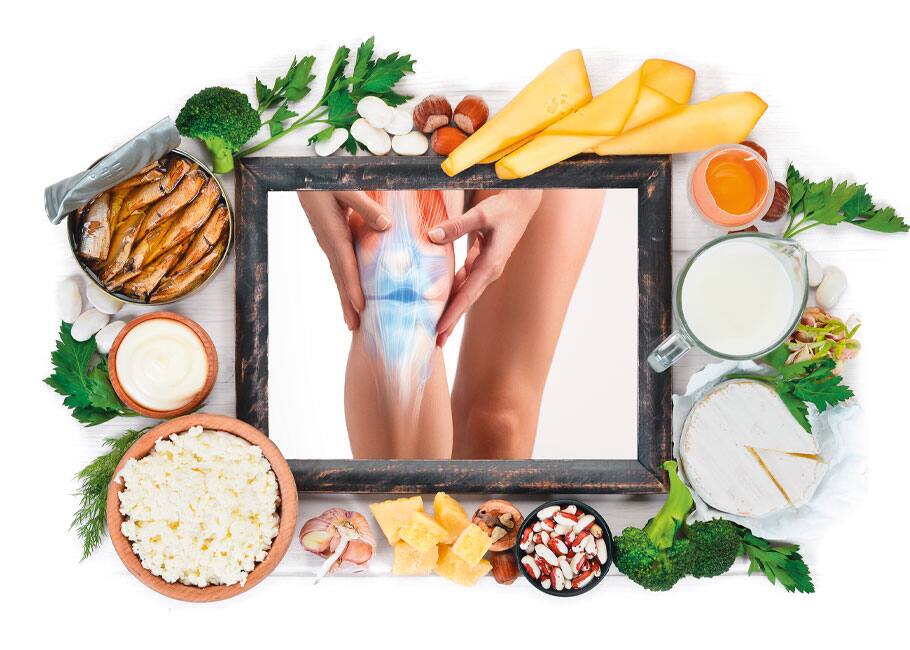
Osteo path
Knee ailments may be prevented or reduced by following some basic steps
The knees are the largest and one of the most stressed joints in the body. Knee overuse injuries occur when the muscles, tendon or internal joint structures undergo repetitive stress over a prolonged period.
According to the Arthritis Alliance of Canada, more than 4.4 million Canadians live with osteoarthritis (OA), and one in four Canadians are expected to have OA in 30 years.
“Chronic knee injuries include osteoarthritis and tendonitis, which can occur from excessive exercise, sports and certain occupations. Symptoms you may notice include swelling, pain, stiffness and weakness. As these tend to be chronic issues, healing may take anywhere from several weeks to months to heal,” says Dr. Jihad Abouali, a sports surgeon at the University of Toronto.
While there is no cure for knee OA, making the following lifestyle changes can help manage symptoms, reduce risk and delay the onset of the disease.
Strengthen muscles. The quadriceps and hamstrings support and stabilize the knee joint. Strengthening these muscle groups improves knee mobility and keeps them flexible. Weight-bearing exercises are crucial for developing, maintaining and increasing knee strength. A routine stretching or yoga program and low-impact resistance exercises can reduce wear and tear and strengthen the knees.
Increase ROM. Full range of motion (ROM) allows the joint to bend, rotate or extend. ROM can decrease if the muscles and joints remain inactive and deteriorate over time. ROM exercises improve overall muscle strength, agility and circulation; reduce stiffness; and provide balance and smooth joint movement. Gentle and persistent stretching can strengthen and restore the motion of the knee.
Good posture. “Imbalances or weakness in the hip or torso may put undue pressure on your knees,” says Abouali. “It is imperative to keep your core strong, in addition to your hips and knees, to achieve proper balance and protection of your joints."
Eat right. Dairy, leafy greens, sardines, salmon, tuna, mushrooms and foods fortified with calcium, vitamin C and vitamin D contain great bone-boosting nutrients. Ask your doctor about supplements if you don’t get enough bone nutrition from food.
Nuts and seeds, fish oils, cruciferous vegetables, blueberries, tomatoes, olive oil, lentils, beans, turmeric, garlic, whole grains and dark chocolate contain antioxidants that may help maintain healthy joints.
Stay hydrated. Because 70% to 80% of joint cartilage consists of water, lack of hydration causes less lubrication in the joints, in turn causing joint pain. Drinking more water improves the production of synovial fluid, reduces inflammation, supports circulation and maintains the cartilage’s shock absorbing properties.
Ease the load. According to an article in The Permanente Journal, every 0.45 kilogram (1 pound) of weight gained adds 0.9 to 1.8 kilograms (2 to 4 pounds) of pressure on the knees. Weight loss reduces the risk of OA, improves function and may slow the worsening of OA symptoms.
Get help. Rest, over-the-counter pain relievers, gentle compression and elevation may help with minor knee symptoms. However, feeling a pop, twisting the knee, catching (the feeling of something getting stuck in the knee) or locking (inability to move the joint) are serious injuries that warrant a visit to an orthopedic surgeon.
Adopt a healthy lifestyle early to strengthen your joints to minimize the risk of injury, and reduce the stress on your knees.

Keep them fit and injury-free
Preventive measures and certain exercises can help strengthen knees and avoid injury.
● Warm up before a physical workout and cool down after. Gentle stretching after exercising can help ease pain and boost muscle flexibility.
● Change the intensity of physical activity gradually and stop exercising if you feel any pain. Incorporate rest periods into training regimens to avoid overtraining.
● Leg lifts, hamstring curls, wall squats, single-leg dips, step exercises, seated knee extension, standing knee flexion, and calf and heel raises are fantastic knee-strengthening exercises to add to your workout routine.
● Low-impact activities such as swimming, cycling, elliptical training, rowing and hiking can also improve knee flexibility and strength.
Talk to your doctor about specific workouts that are good for you.-SN
Costco Connection: Joint-healthy foods, supplements, over-the-counter pain relievers, and more are available in Costco warehouses and at Costco.ca. Exercise equipment is available seasonally in Costco warehouses and year-round at Costco.ca. Prescription medications can be obtained at Costco pharmacies.

